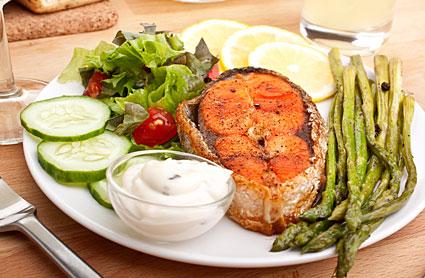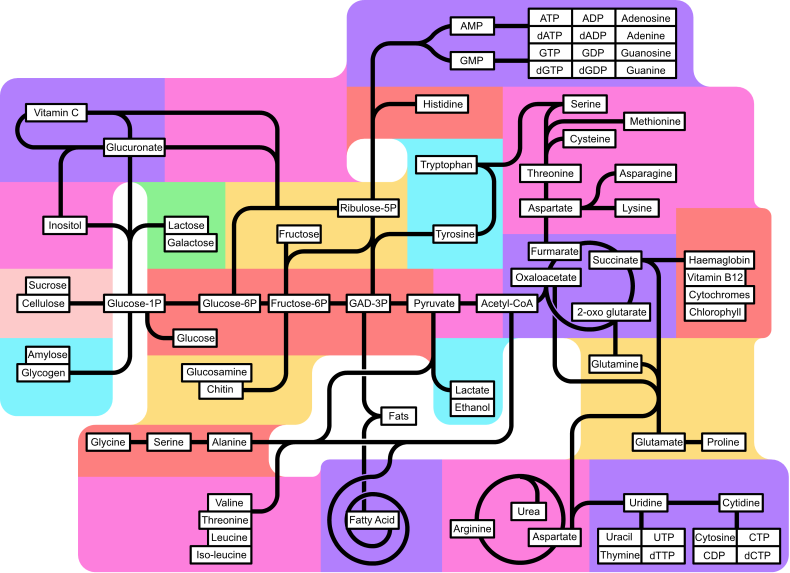Atkins diet revisited

Atkins Diet or the Ketogenic diet is one of the most
popular weight reduction diets. Low carbohydrate, medium protein and a high fat
diet are the fundamentals of this particular form of diet. The credit of
popularizing the ketogenic diet for weight reduction goes to Dr. Robert Atkins
in 1958. He used this diet to resolve his own overweight condition and was
successful to a good extent. He then published several books regarding this
diet, the first one being “Dr.
Atkins' Diet Revolution in 1972 and the latest one being The New Atkins for a New You in 2010.
This book covers a lot of new information which had not been previously covered
including nutrient rich foods as Atkins diet has often been criticized of being
nutrient deficient. The diet regime has been the most controversial one yet the
most popular!!!

The scientific basis:
The Atkins diet finds its roots in basic human metabolism. We all are
aware that we need energy not only to survive but also is energy required by
the human body for carrying out all its vital functions. This energy that the
human body uses is derived from the food we eat. The food that we eat is
comprised of carbohydrates, proteins and fats which are energy producing and
vitamins and mineral which do not provide any energy. So we keep our focus on
Carbs, fats and proteins. Out of the three, fat provides the highest energy
that is 9 Kcal/ gm; whereas proteins and carbs provide 4 Kcals/ gm. All these
nutrients are then broken down to glucose through different metabolic pathways
which then helps to release energy.
Of all the three energy providing nutrients, carbs are the first ones
to be broken down to glucose to release energy. Also the storage form of carbs
lasts for a day only. Fats are usually reserved for later use by the body or
during long periods of starvation; proteins are used for muscle development.
The atkins diet is based on restricting the use of carbohydrates so
that the fat reserves of the body are mobilized and converted to glucose to
provide energy, thus resulting in weight loss. However the process is not all
that simple as written and involves a number of hormonal interplay before fat
being used as an energy source. Another theory that Atkins Diet is based on is
the fact that the glucose, after being used for energy purposes and being
stored in muscles and liver as glycogen, the remaining is converted to fat and
stored in the body resulting in weight gain. So if fat is being used for energy
giving purpose, it will help in weight reduction and will also prevent weight
gain from excess carbs.
How it works:
As stated earlier, the Atkins diet is based on carbohydrate
restriction. But not all kinds of carbs are restricted. Only the “net carbs” (digestible carbohydrate grams that affect blood sugar less fibre
grams) which provide
energy upon breakdown are restricted. Carbs in the form of fibre are allowed
and can be consumed liberally as fibre is not digested by the human body and
excreted as such.
Also the use of a high fat diet helps in retarding the digestion as
high fat foods take time to be digested which helps in reducing the hunger
sensation. In contrast, a high fibre and a low fat diet is easily digested
resulting in increased hunger. Hunger suppression is one of the most common
cause of dietary regime failures. However, studies claim that Atkins diet is
easy to adhere to.
What to eat:
There are four phases of the dietary regime.
The Atkins diet starts with the Induction phase where the
body has to be induced to switch over the energy source from carbs to fats.
This procedure requires ketosis (breakdown of fat for energy) to be trigerred.
This is done by severe carbohydrate restriction for one week. During this
period, the net carbohydrate intake is restricted to 20 gms. Foods of choice
may be high protein foods like milk, eggs, meats, chicken, tofu which are
generally low in carbs.
Use plenty of raw whole vegetables like cucumber,
tomatoes, asparagus, spinach, pumpkin, cabbage, capsicum etc. so as to increase the bulk of the diet.
Vegetables are generally high in fibre. Cheese is another preferred food.
Though many cheeses are not very high in carbs, careful reading of the labels
is required as some cheeses may be high in carbs. 3-4 ounces of cheese/ day is
acceptable.
Then use liberal fats and oils. Olive oil/ peanut/
canola oil is the preferable choice; however small amounts of sunflower/
safflower/ soyabean oil may be used. Choose for regular fat mayonnaise and
salad dressings. Peanut butter may be a better choice than the regular butter. Cream may also be used.
Water is considered the best beverage for people
following Atkins Diet. Its helpful in removing the extra ketones from the body
which are produced as a result of fat metabolism. Also its a zero calorie
drink. Decaffeinated coffee, herbal green teas may be used, however, with no
sugar in it. Aerated drinks, cola and juice need to be strictly avoided.
However, you can use sucralose (splenda) as an artificial sweetner, which will
provide you with the sweetness but not the sugar.
Alcoholic drinks are not allowed during this phase.
Most of you will see the maximum weight loss during
this period.
 The second phase is the ongoing weight loss phase. The Ongoing Weight Loss (OWL) phase of Atkins consists of
small, incremental increase in carbohydrate intake, but remaining at levels
where weight loss occurs. The target daily carbohydrate intake increases each
week by 5 net grams, a very low amount of carbohydrate. The main aim of this
phase is to continue the on-going weight loss and has to be continued till the
weight is with in 4.5 kg of the target weight.
The second phase is the ongoing weight loss phase. The Ongoing Weight Loss (OWL) phase of Atkins consists of
small, incremental increase in carbohydrate intake, but remaining at levels
where weight loss occurs. The target daily carbohydrate intake increases each
week by 5 net grams, a very low amount of carbohydrate. The main aim of this
phase is to continue the on-going weight loss and has to be continued till the
weight is with in 4.5 kg of the target weight.
During the first week of the OWL phase,
the vegetables acceptable in the induction phase like asparagus, cauliflower or
avocadoes. The next rung to be climbed is the inclusion of cheese, nuts and
seeds. This may include peanuts, sesame seeds, almonds, walnuts, cashews etc. The
rungs of the carb ladder suggested by The Atkins Diet is given below. However,
you can choose from the rungs of the ladder and avoid some like alcohol, which
is not necessary.
- increase acceptable
vegetables
- Cheese
- Nuts and seeds
- Berries
- Alcohol
- Legumes
- Other fruits
- Starchy vegetables
- Whole grains
 The third phase is the pre-maintenance
phase. Daily net carbohydrates intake is increased again this time by
10 grams each week from the latter groupings, and the key goal in this
phase is to find the "Critical Carbohydrate Level for Maintenance".
This is the maximum number of carbohydrates a dieter can eat each day without
gaining weight. This may well be above the level of carbohydrates that induce ketosis on a testing stick. As a result, it is
not necessary to maintain a positive ketosis test long term.
The third phase is the pre-maintenance
phase. Daily net carbohydrates intake is increased again this time by
10 grams each week from the latter groupings, and the key goal in this
phase is to find the "Critical Carbohydrate Level for Maintenance".
This is the maximum number of carbohydrates a dieter can eat each day without
gaining weight. This may well be above the level of carbohydrates that induce ketosis on a testing stick. As a result, it is
not necessary to maintain a positive ketosis test long term.Dieters may be able to add some of the forbidden carbs back into their diet once a week. In this phase, according to the Atkin diet, one's body is beginning to lose the protection of ketosis as one prepares for the last phase which is Lifetime Maintenance.
Dieters are encouraged to continue to drink at least eight glasses of water per day and to increase their daily carbohydrate count by 10 grams each week as long as they continue to lose weight. The Atkins plan recommends that once dieters reach their goal weight and are able to maintain that level for a month or so, then they can increase their daily carb consumption by another 10 grams to see that is possible without gaining. If one gains weight at the level, the plan recommends that one drops back levels of carbohydrates in 10 grams increments. It may take several weeks to find one's individual tipping point.
The fourth and the last phase in the maintenance phase. This phase is intended to carry and continue the eating patterns that had been practices well during the previous phases. The favourite carbs can be consumed in small quantities but you will always have to check the quantity of carbs so as to maintain your weight.
Also you have the option of starting it all over again if you feel that you have started to gain weight again!!!!
Controversies:
The Atkins diet has always been surrounded by controversies. The medical circle for nearly three decades and presently argues the disadvantages of a high fat diet. But the promoters of The Atkins diet believe that this kind of a high fat and a low carb diet is better metabolically and provides protection against the metabolic syndrome. They also rule out the possible risk of heart diseases that may occur due to such a high fat consumption.
Also some people believe that such kind of diet is not easy adhere on to and people may loose command soon but the diet also seems to be very popular at the same time.
Nevertheless, whatever are the controversies and misconceptions regarding the Atkins diet, it is very popular and effective for short term weight loss. Long term results would depend on how seriously people are able to follow it and adhere to it.




